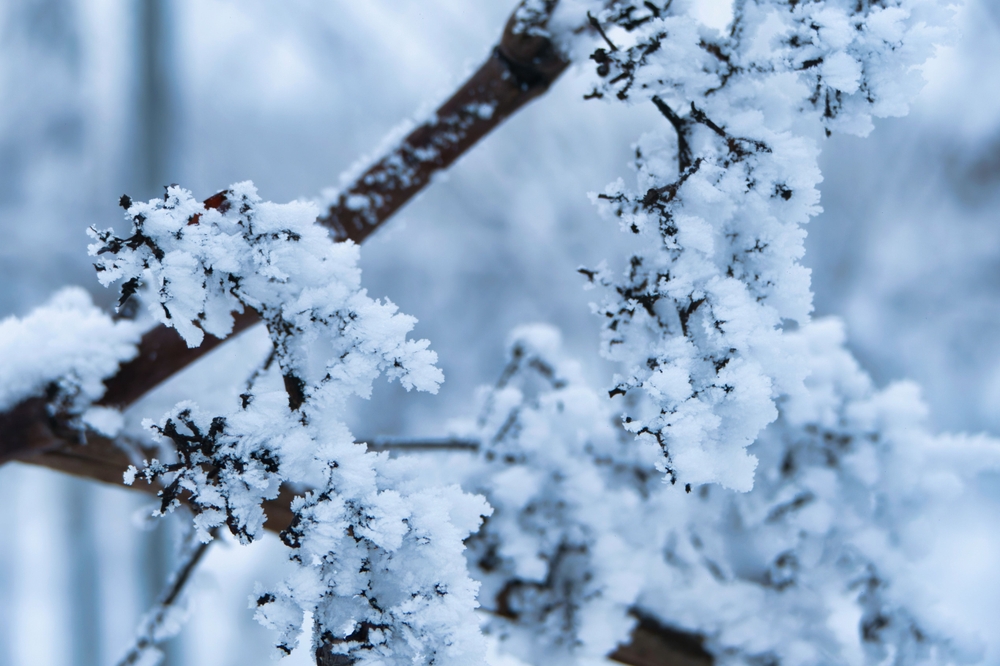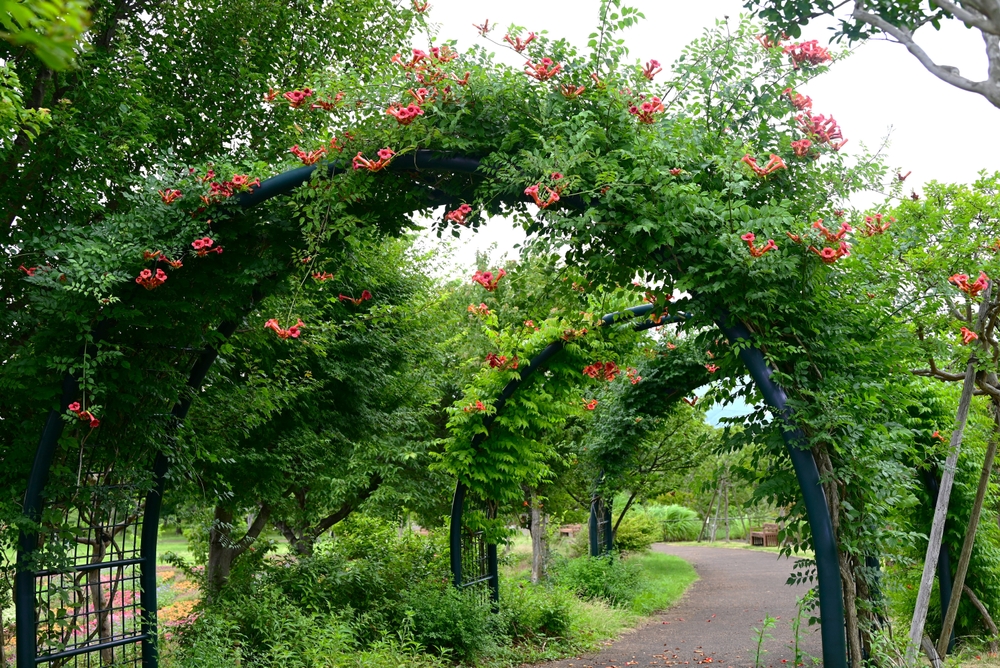
Image Source: Shutterstock.com
Winter may feel like a time to hibernate and forget about the garden, but your vines have other plans. As the temperatures drop, those leafy climbers are busy preparing to either thrive or take over once spring arrives. The difference? Whether you give them a proper trim before the snow flies.
Cutting back the right vines before winter isn’t just about appearances—it’s about protecting your garden from frost damage, disease, and tangled chaos come spring. So grab your gloves, sharpen those shears, and let’s talk about the eight vines that deserve a little haircut before the cold rolls in.
1. Clematis—The Overachiever That Needs a Reset
Clematis is the show-off of the garden—lush, colorful, and eager to please. But if you leave it alone all winter, it turns into a tangled web of dead stems and missed potential. Pruning it back before snow allows new growth to emerge strong and vibrant when spring returns. The trick is knowing which variety you have; some bloom on old wood, others on new, so cutting too far or too little makes a big difference. Give it a thoughtful trim in late fall, and you’ll be rewarded with a cascade of blossoms that look like something straight out of a fairy tale.
2. Wisteria—Beautiful but Ruthless
Few vines capture attention like wisteria, with its dreamy lavender blooms draping over pergolas. But behind that beauty lies a powerhouse that doesn’t know when to stop. Left unchecked, it will choke out nearby plants, warp trellises, and even pull-down structures with its weight. Cutting it back before snow helps tame its wild energy and prevents branches from snapping under the pressure of ice and frost. A firm, clean trim is the only way to remind wisteria who’s boss—otherwise, it’ll own your garden by spring.
3. Honeysuckle—Sweet-Scented Trouble
Honeysuckle might smell heavenly, but don’t let that fragrance fool you—it’s a climber with a mission. By winter, it’s often a tangled mess of old wood and overgrown stems that can easily harbor pests. Trimming it back before snow helps it breathe, encouraging healthier shoots when the warmth returns. It’s best to remove older, weaker canes while leaving the younger, stronger ones to thrive. The reward? A fresh, vigorous burst of those intoxicatingly sweet blooms come summer.
4. Trumpet Vine—The Showboat That Needs Boundaries
If there’s one vine that loves to take center stage, it’s the trumpet vine. With bright, fiery flowers that attract hummingbirds, it’s the drama queen of the garden—but also the biggest troublemaker. Without a serious pre-winter trim, it spreads like gossip, sending runners through soil and creeping up every nearby surface. Cutting it back before snow stops the madness and keeps it manageable when growth explodes in spring. This is a vine that respects firm boundaries—give it an inch, and it’ll take your entire fence.

Image Source: Shutterstock.com
5. Virginia Creeper—The Sneaky Climber
Virginia creeper starts out charming, with its red autumn leaves and graceful tendrils. But if you’ve ever seen it engulf a wall or tree, you know it doesn’t stop when the weather cools. Pruning before snow helps control its spread and keeps it from damaging siding or fences. Those vines can hold moisture against structures, which means rot and mildew when the freeze sets in. A clean cut now means a cleaner start later—and your home will thank you.
6. Grape Vines—Productive but Pushy
Grapevines are wonderful if you’re into winemaking or simply enjoy a summer harvest. But they’re notorious for growing out of control if left to their own devices. Before winter, cutting back the excess wood helps the plant channel energy into stronger, healthier canes for next year’s fruit. It’s all about quality over quantity—too many branches mean weaker grapes. A good pruning keeps your vineyard (or backyard version of one) looking sleek and sets the stage for a bountiful season ahead.
7. Bittersweet Vine—The Pretty Menace
Bittersweet looks innocent enough, with its bright berries and twirling stems, but don’t be fooled. It’s an aggressive invader that can strangle trees and fences if not managed. Cutting it back before the snow not only controls its spread but also keeps it from reseeding and taking over your property. The stems become brittle and easier to manage in late fall, so it’s the perfect time to get ahead of it. Left unchecked, bittersweet will transform from a decorative accent to a full-blown garden nightmare by spring.
8. Morning Glory—The Charming Overachiever
Morning glory vines are beloved for their delicate, trumpet-shaped flowers that open with the sunrise. But once the blooms fade, they leave behind a dense web of stems that can suffocate neighboring plants. Cutting them back before snow ensures they don’t drop seeds everywhere, which means fewer surprise sprouts next season. This annual vine doesn’t need to be babied through the cold—just trim it clean and let nature reset it for you. When spring rolls around, you can start fresh with new seeds and an uncluttered space ready for color.
A Little Trim Now Saves a Lot Later
Winter pruning isn’t about perfection—it’s about prevention. By cutting back these vigorous vines before the snow settles in, you’re giving your garden a head start on a healthier, more manageable spring. It’s a simple ritual that protects your plants, your property, and your sanity from wild, unruly growth. Plus, there’s something deeply satisfying about cleaning up the last of the season’s chaos and knowing your garden is ready to rest.
Have a favorite vine or winter pruning tip of your own? Share your thoughts, stories, or pruning victories in the comments below.
You May Also Like…
Why Pumpkins Rot Faster if Left on Vines
12 Ways to Use Pumpkin Scraps in the Garden
6 Wildflowers to Scatter Before the Snow Comes
What’s a Frugal Gardener to do in the Snow?
How to Prep Raised Beds for Snowfall
Leave a Reply